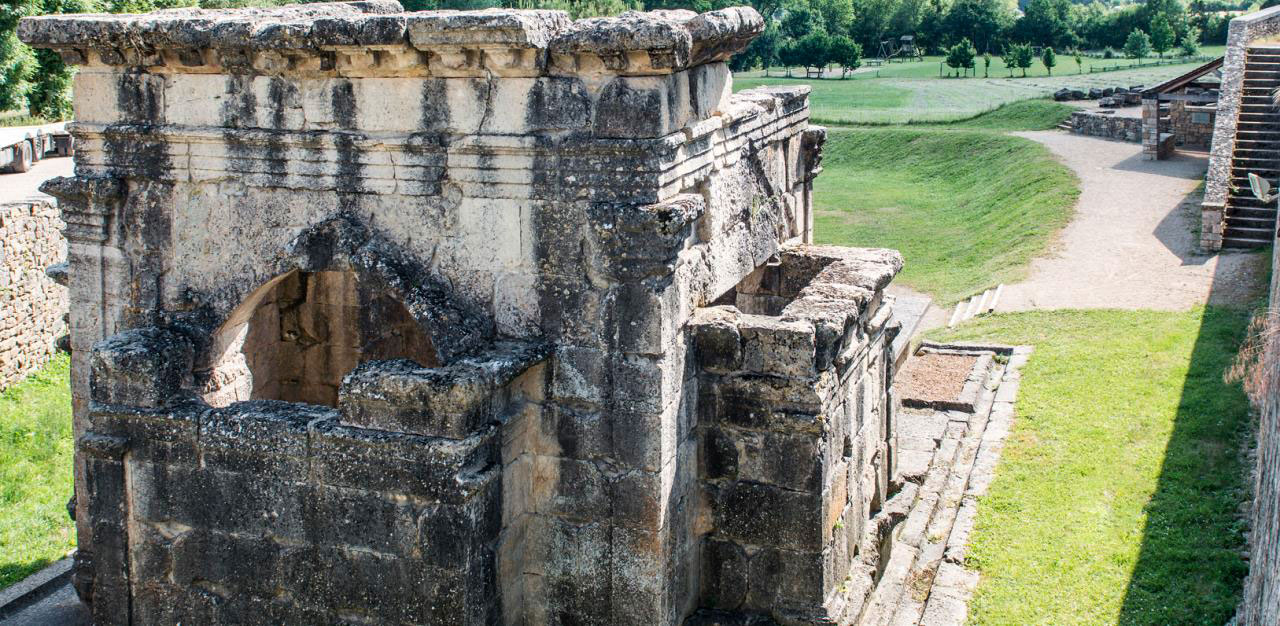
At the entrance to the village of Lanuejols, are the remains of one of the rare Gallo-Roman mausoleums preserved in France. The mausoleum was first reported in 1254 and was, at that time, almost completely buried under the scree. According to historians, the Roman tomb of Lanuéjols dates from the 3rd century and was erected in memory of Lucius Pomponius Bassulus and Lucius Pomponius Balbinus by their parents, Lucius Julius Bassianus, their father and Pomponia Regula, their mother.
This family, probably of Syrian origin, was introduced to the court of Rome by the emperor Septimius Severus.
In 1813, the prefect of Mende opposed the removal of stone from the owner. The mausoleum was then completely cleared, but in 1817 a ravine buried it again.
Classified as a historical monument in 1840, it was the subject of excavations and restoration from 1855 onwards, revealing a monument with a square plan, flanked on the north, east and south by three niches. The western wall is pierced by a door surmounted by a lintel engraved with a Latin inscription, "In honor and memory of their pious sons Lucius Pomponius Bassulus and Lucius Pomponius Balbinius, Lucius Julius Bassianus, their father, and Pomponia Regula, their mother, built this monument from the foundations to the top and dedicated it to them, as well as to the neighboring buildings. "Above the door and the lintel, there is a semicircular bay whose arch, encircled by an archivolt, is decorated with winged genii, naked, half-reclining loves, supporting the fins of the inscription cartouche, linked by scrolls, from whose scroll escape vine leaves and bunches of grapes. The arches are decorated with sculptures. The four corners of the square are decorated with pilasters of Corinthian order.
In 1880, 60 m further south, the remains of a second monument, the "Monument aux frises d'amours" (Monument to the friezes of loves), were excavated. Excavations have uncovered a number of blocks stored on either side of the site. These blocks are attributed by archaeologists to a third monument.
This masterpiece of architecture constitutes, by its remarkable state of preservation, the second Roman funerary monument in France after that of Saint-Rémy-de-Provence.
In the Village
48000 Lanuejols
https://www.lozere-tourisme.com/mausolee-romain-de-lanuejols/lanuejols/pcular0480000287
Translated with www.DeepL.com/Translator
(free version)



